It’s a common sight in many households: the dog, head buried in the cat’s litter box, searching for treasure despite your efforts to keep it away.
This disrupts your cat’s peace and raises health and hygiene concerns. The risk of infections increases with every visit your dog makes to the litter box.
Dive into this guide to unveil 12 proven strategies to deter your dog from the cat’s litter box, reinstating harmony among your furry companions. Read on to turn the tides in your favor and keep the dog out of the litter box for good.
- Dogs eating cat feces can lead to serious health risks.
- Covered litter boxes deter dogs by being less inviting.
- Self-cleaning boxes clean up quickly, leaving less temptation.
- Various deterrents and training can keep dogs away.
This post may include affiliate links.
The information provided herein is for informational purposes only. Please refer to our disclaimer for more details..
- Why Dogs Are Attracted To The Litter Box
- The Dangers Of Dogs Accessing The Litter Box
- 12 Tips for Keeping Your Dog Out of the Cat’s Litter Box
- 1. Use a Covered Litter Box
- Comparison of Covered Litter Boxes
- 2. Place Your Cat’s Litter Box Somewhere High
- 3. Get a Self-Cleaning Litter Box
- Comparison of Self-Cleaning Litter Boxes
- 4. Keep the Litter Box Area Gated
- 5. Install a Cat Door
- 6. Make Your Cat’s Feces Less Desirable
- 7. Use Baby Gates
- 8. Use Deterrents
- 9. Train Your Dog to Stay Away from the Litter Box
- 10. Keep the Litter Box in a Separate Room
- 11. Create a Designated Feeding Area
- 12. Clean Your Cat’s Litter Box Frequently
- Final Thoughts
- Frequently Asked Questions
Why Dogs Are Attracted To The Litter Box
Dogs are natural scavengers and curious animals that really love to explore their surroundings.
So, here’s a simple fact – dogs have an amazing sense of smell, way better than ours. A dog’s sense of smell is incredibly superior; they possess up to300 million olfactory receptorsin their noses, compared to about 6 million in humans.
Image credits: Pixabay
Now, think of the litter box as a mystery box filled with interesting scents, even though it might be a little gross for us. Because of their strong nose, dogs can quickly detect unique smells from the litter box, marking it as the cat’s special area.
So, curiously, they often check it out – and sometimes even leave their own mark. Why? Well, it’s just a dog’s way of saying, “I was here too!”
The Dangers Of Dogs Accessing The Litter Box
When a dog sneaks into a cat’s litter box and eats cat poop, it’s not just annoying, but it’s seriously dangerous too. Dogs curiously sniffing around and eating cat poop might swallow harmful parasites like toxoplasmosis.
This act, called coprophagia– can sadly lead to dental issues and even a really upset stomach. Furthermore, the cat might become super stressed if it feels the dog is invading its space, potentially causing behavioral issues.
Additionally, certain chemicals in cat litter can be particularly dangerous for dogs, possibly causing stomach and intestinal blockages.
So, understanding these pretty concerning risks and knowing why dogs are attracted to the litter box can help you keep both pets safe and happy.

12 Tips for Keeping Your Dog Out of the Cat’s Litter Box
Now that we’ve delved into the why and the what, let’s traverse the path of how. The way to keep your dog away from the cat’s litter box ranges from simple tweaks to a bit of training, all aimed at harmonizing the co-habitation of your fur family.
1. Use a Covered Litter Box
Think of a covered litter box as your cat’s private room—secure and hidden. Dogs usually find this type of box less tempting. It’s simply because the closed space is a tad intimidating and less inviting.
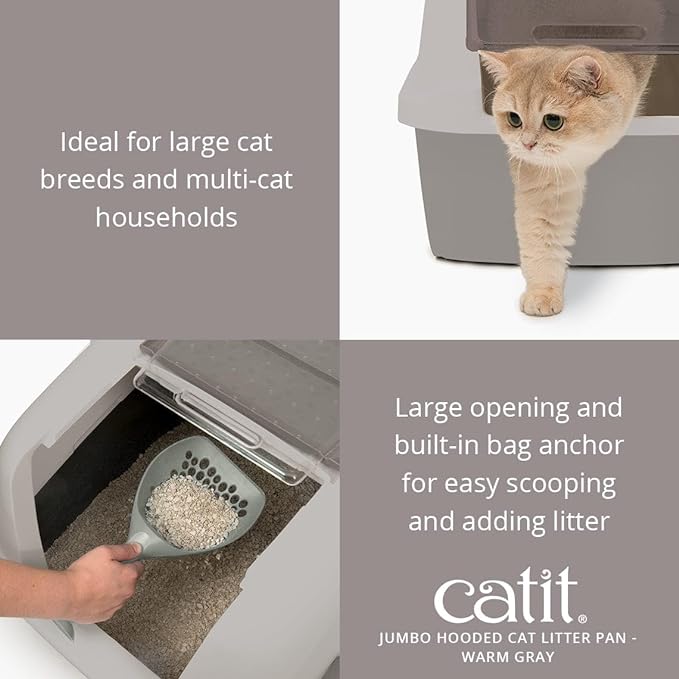
Comparison of Covered Litter Boxes
Catit Airsift Jumbo Hooded
Large hood lifts for easy cleaning, carbon filter
Petmate Booda Dome
With a large filter, sleek round design
Modkat Flip Litter Box
3 lid positions, reusable liner, modern design
2. Place Your Cat’s Litter Box Somewhere High
Cats are naturally great at climbing and jumping, so why not use that to your advantage?
Place the cat box somewhere high, making it tricky for the curious dog to reach. You could think of spots like:
- Sturdy shelves
- Countertops in a utility area
- Halfway up the stairs
- Open cabinets
- Special cat trees with spaces for litter boxes
3. Get a Self-Cleaning Litter Box
A self-cleaning litterbox is basically a constant cleaner — always working. After every time the cat uses it, this smart box swiftly cleans up, making it less tempting for your dog.
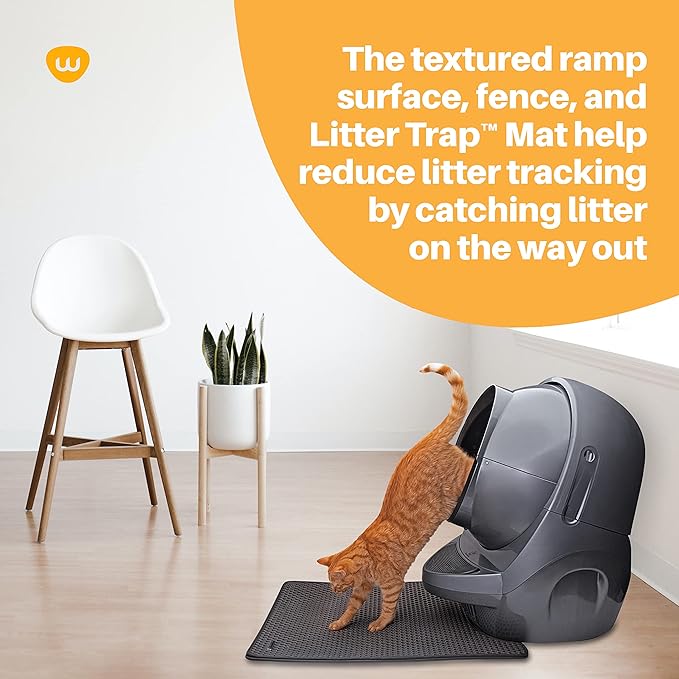
Comparison of Self-Cleaning Litter Boxes
Litter-Robot 3
Automatic sifting, Wi-Fi enabled, night light
PetSafe
Washable granules, self-washing and drying
ScoopFree Complete Plus
Automatic raking, disposable trays, safety sensors
4. Keep the Litter Box Area Gated
Think about putting a simple gate or fence around where the litter box is. This easy trick creates a special zone for your cat but restricts your dog’s access to the litter box.
- Measure to get the right gate size.
- Pick a gate that’s no hassle for your cat but tricky for the larger dog.
- Set it up firmly, following the steps given.
- Teach your dog to leave the gated area alone — and give treats for good behavior!
- Maybe add a small cat door to the gate so your cat can come and go smoothly.
5. Install a Cat Door
Imagine having a special little door just for your cat, leading to their litter room — smart, right? This cool pet door lets your cat glide in and out easily, but for your dog? It’s a no-go zone.
- First, pick a spot that’s handy for your cat but tricky for your dog.
- Next, measure the area and mark it, making absolutely sure it fits your cat perfectly.
- Then, grab a saw or cutter and neatly chop out the marked section.
- Set up the cat door securely, as the guidelines tell you.
- Lastly, show your cat the ropes — maybe use treats or a bit of gentle nudging.
6. Make Your Cat’s Feces Less Desirable
Ever noticed your dog being too interested in the cat’s litter box? Here’s a trick — make that cat feces a bit boring for them.
- Add additives like For-Bid or pineapple juice to your cat’s meals.
- Consider changing the cat food to a different brand or type.
- Use a deterrent spray around the litter box area.
- It is always good to consult with your vet — they might have some safe and clever ideas to keep dogs away.
7. Use Baby Gates
Baby gates are super handy barriers that can quickly make parts of your home off-limits for your dog. But this will only work if your cat is smart enough.
- First, measure the area where you want the pet gate — you’d want a snug fit.
- Find a gate that either has a small cat door or is just low enough for your cat to easily hop over but still high for the dog.
- Install it by carefully following the given steps.
- Always make sure it’s shut tight — you don’t want any sneaky dog visits.
- And remember, whenever your dog stays away from it, give them a treat — it’s their reward for being good!
8. Use Deterrents
To keep dogs away from the cat’s litter box, you can use deterrents — tools that discourage them without hurting them. Here’s a list:
- Deterrent Sprays: Think of sprays that smell super bad to dogs. One whiff, and they’ll probably stay away.
- Scat Mats: These clever mats give a tiny static shock — not harmful, just surprising — which makes dogs think twice before getting close.
- Motion Alarms: These alarms loudly beep or buzz when your dog gets near, effectively scaring them off.
- Odour Absorbers: By placing these nearby, you hide the litter box smell, which often tempts dogs.
- Double-sided Tape: Dogs really don’t like this sticky stuff. Put some around the litter box, and they’ll likely steer clear.
While all those work great for dogs, if you have multiple pets in your home, remember that scat mats and alarms are likely to stress the cats out and could affect their use of their tray.
9. Train Your Dog to Stay Away from the Litter Box
Training your dog to avoid the cat’s litter box is smart — it’s like setting house rules. And the best part? It strengthens the cool bond between you two.
- Establish Boundaries: Teach your dog where they can and can’t go in the house.
- Use Commands: Whenever they get close to the litter box, firmly use commands like ‘leave it’ or ‘stay.’ This also makes your dog well-behaved.
- Positive Reinforcement: Every time your dog listens and avoids the litter box, reward them — a treat or a loving pat works wonders.
- Divert Attention: If they’re too curious about the box, quickly distract them with a toy or a fun game.
- Stay on Track: Training isn’t a one-time thing. Keep at it daily, and over time, they’ll get it!
10. Keep the Litter Box in a Separate Room
Think about giving your cat’s litter box its private room. It’s like their little bathroom, away from the curious dog.
- Room Selection: Choose a quiet room where your dog rarely goes.
- Cat Comfort: Make sure your cat can get in there easily, whenever needed.
- Door Wedge: Use a door wedge — open just enough for your cat but too narrow for your dog.
- Special Cat Door: You could put in a cat door so your dog can’t get in.
- Signage: Place a sign on the door to remind others to keep it closed.
11. Create a Designated Feeding Area
It’s smart to have different eating spots for your pets. Your dog might be less interested in the cat’s litter box when they know their eating zones.
- Separate Rooms: Let them eat in separate rooms.
- Feeding Schedule: Stick to a feeding schedule so there’s no food envy between them.
- Elevated Feeding: Maybe put your cat’s food bowl somewhere high so the dog can’t sneak a bite.
12. Clean Your Cat’s Litter Box Frequently
A neat litter box isn’t just pleasant for your cat—it’s also less tempting for your dog.
- Scoop the litter box at least twice a day to remove feces and clumped urine.
- Change the litter completely and clean the box with mild detergent weekly.
- Replace the litter box once a year or when it shows signs of wear.
- Consider using a litter deodorizer to reduce odor.
- Always wash your hands thoroughly after cleaning the litter box.
In short, there are so many ways — techy and simple — to keep your dog away from your cat’s litter area. It means a chill cat, a safe dog, and peace at home!
Final Thoughts
In wrapping up, steering your dogs away from the cat’s litter box is not only about keeping the peace at home but also about ensuring the health and well-being of your pets.
Adopting the strategies discussed will surely set you on the right path. Your journey towards a harmonious, pet-filled home just became a tad easier. Remember, a little effort goes a long way in nurturing a friendly pet environment.
Frequently Asked Questions
How do I keep my dog to stay out of the litter box?
Training, using deterrents, and making the litter box inaccessible are key strategies. Implementing a combination of these methods can significantly reduce your dog’s interest in the litter box.
Is there a dog-proof cat litter box?
Yes, there are dog-proof litter boxes available in the market. They come with features like high walls, top entry, or even a door designed to allow your cat in while keeping your dog out.
Why are dogs attracted to litter boxes?
Dogs are naturally curious animals with a keen sense of smell. The scent of the cat’s litter box can be intriguing to them. Moreover, some dogs might find the taste of cat feces appealing due to its high protein content.
Is litter box harmful to dogs?
Yes, it can be harmful. Consuming cat litter can lead to gastrointestinal issues in dogs. Furthermore, cat feces may carry harmful bacteria or parasites, posing health risks for your dog. So, it’s vital to keep dogs away from cat litter boxes.
1Kviews
Share on Facebook
 Dark Mode
Dark Mode 

 No fees, cancel anytime
No fees, cancel anytime 







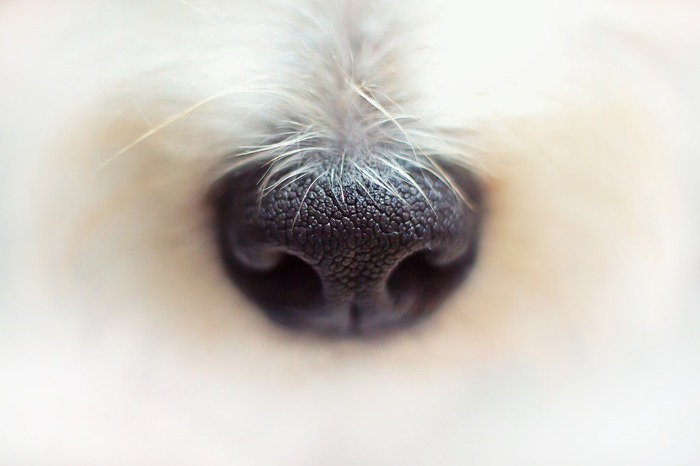
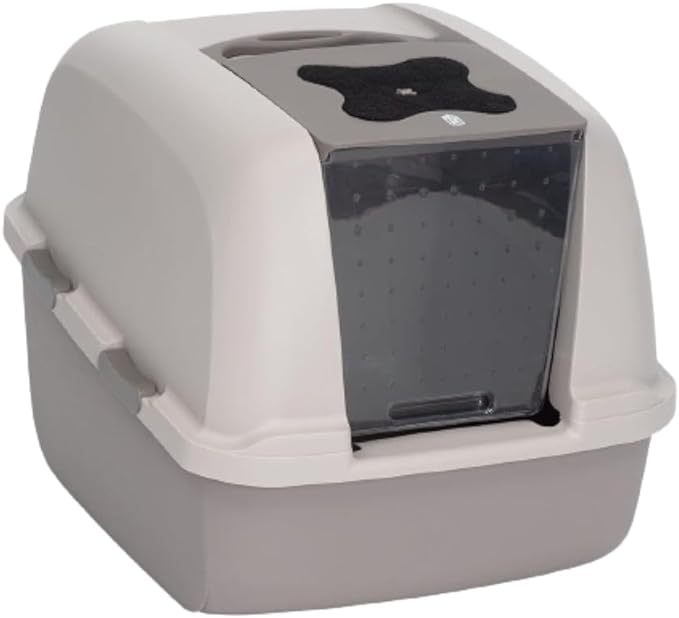
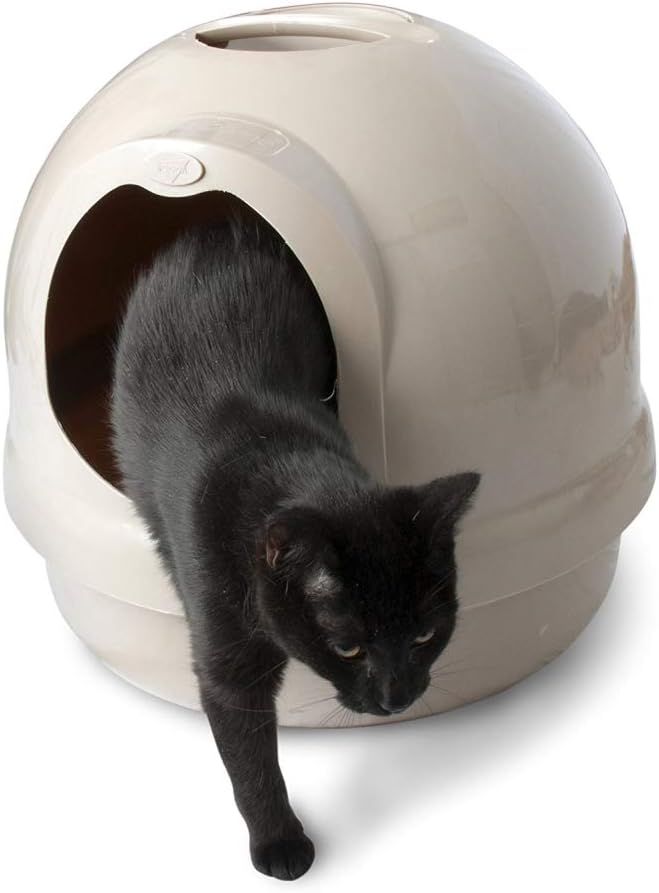
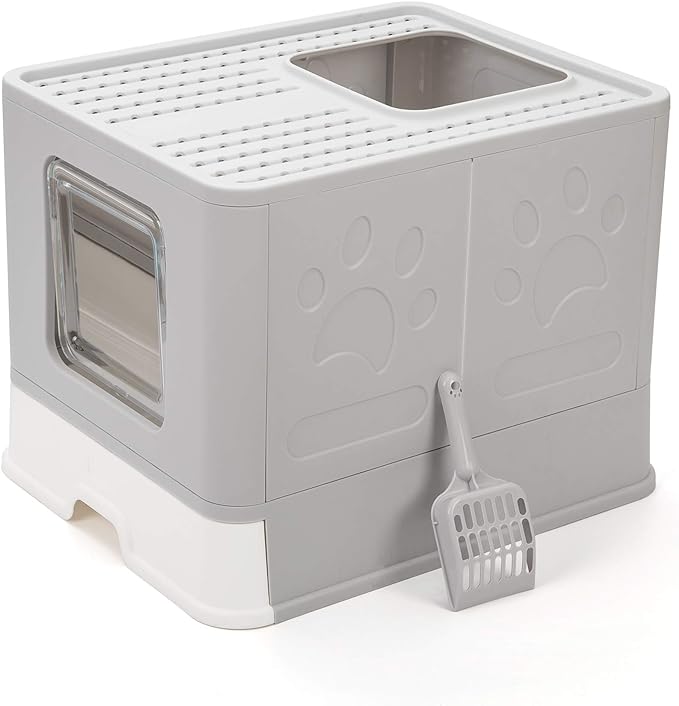
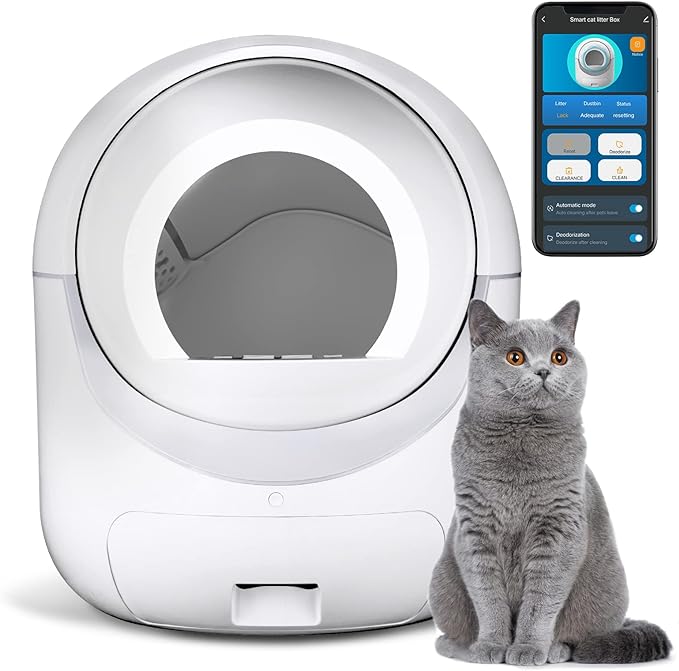
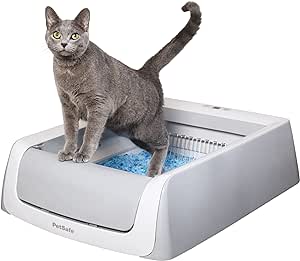
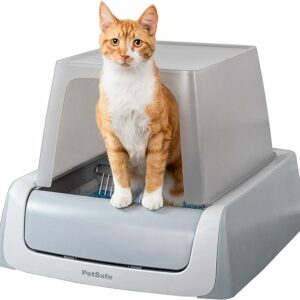











































10
0